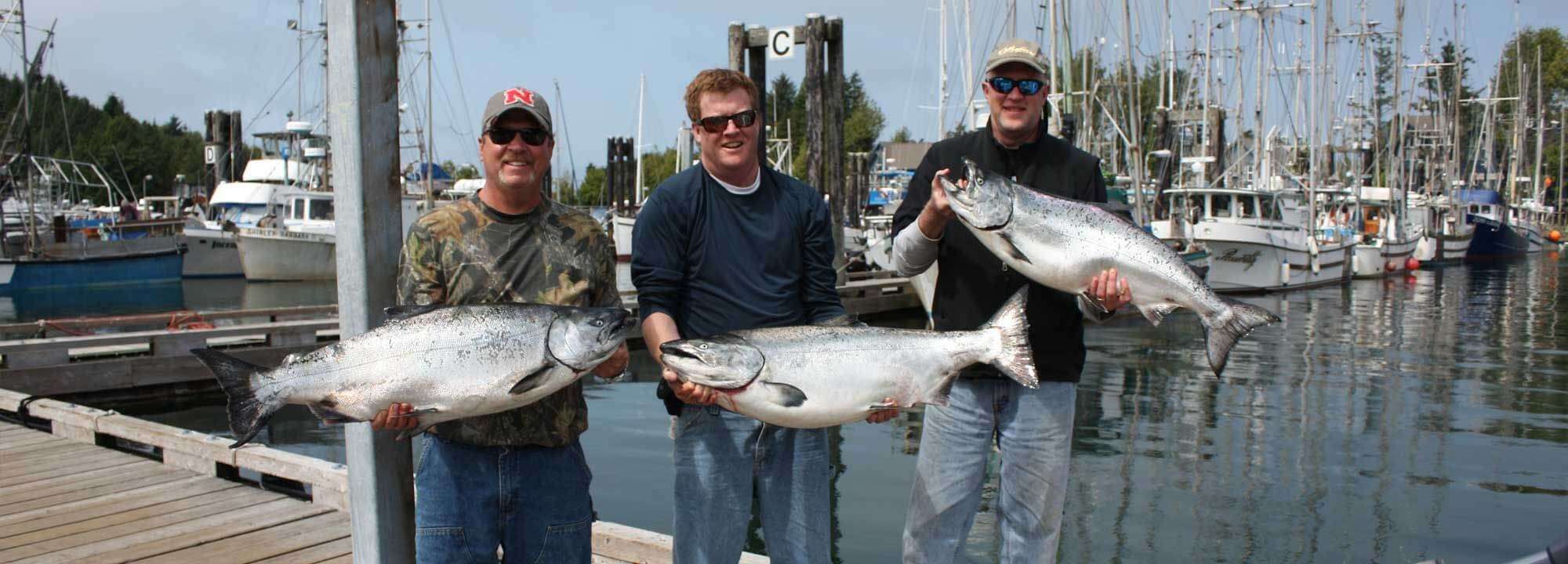
Gallery
Recent Posts
Online Games with…
Online games with free spins…
MAY 3 FISHING…
The best Chinook fishing has…
FISHING REPORT APRIL…
The best Chinook fishing has…
Latest News
Get your spot reserved as soon as possible!
This is a private mailing list and will never be sold or given away for any reason. You can unsubscribe at any time.
HOW TO TROLL FOR HALIBUT OFF VANCOUVER ISLAND’S WEST COAST
Most people I know equate halibut fishing as plunking a 2-3 pound lead and spreader bar baited with herring, salmon bellies, or octopus off a sandy or gravelly bottom. Trolling for halibut can be more productive…, especially if the halibut are somewhat sparse or not actively feeding. It can also be a good way to stay away from the dreaded dogfish or mudshark. Most importantly, since using electric downriggers is a must, the overall personal effort is greatly reduced. Since I have met very few sportfishermen, aside from professional charter operators, who are proficient in the art of halibut trolling, let me offer a few pointers. Omission of even one of these techniques can result in severely diminished catch results.
Most of my halibut trolling experience has occurred off the Ucluelet and Bamfield coast, but it has also worked off Kyuquot and other points north. I see no reason why these methods would not be effective in other areas as well.
Of course, electric downriggers make the whole process much easier. I would highly recommend a set of reliable electrics, although often I will only fish one downrigger on the bottom. Sometimes when the wind or current is fast, fishing one downrigger is the only option. If possible, throw out all your old-fashioned stainless braided cable that have been a mainstay of downrigger fishing over the last decades. The new Kevlar products are much thinner, stronger, and not prone to kinking or rusting. I usually fish with 15 pound weights, but some charter operators go as high as 20. Less than 15 pounds of weight is almost impossible to stay on the bottom. Lastly, if you’re wondering how to attach your release clip to your new downrigger string, simply measure the linear distance of from the downrigger spool, through the end of the downrigger arm to the water surface. On my boat it is 6-7 feet. Find a stout piece of cord and attach it to the main downrigger line using a 200 pound test swivel or O ring with solid knots. Then attach the lead using a snap swivel to the bottom end of the cord. That way you have a built-in shut off for your electric downrigger, as well as a non-slip cord to attach you can attach your release clip.
Now that we have the downriggers geared up, any medium action salmon rod with 30 pound test mainline will work. Some charter operators prefer level wind reels because the gear ratio speeds up line retrieval, but it is your preference. I’ve found that pretty much any rotating flasher will work (yes, we’re trolling with flasher and hootchie). However, flashers that have one side in florescent glow always seem to work a little better. Take just about any glow hootchie, double it up on the leader-that’s right—two hootchies on the same hook. Sometimes I fish tandem 6/0 octopus style hooks, or a single 10/0 Siwash. Either is effective. Leader length should be about 42 inches.
Next, figure out your desired fishing destination. I don’t like to troll for halibut in more than 200 feet of water. With wind and current, it can be a little difficult with water that’s any deeper. If you haven’t fished the area before, try to find GPS coordinates from helpful fishermen. When I troll for halibut off Ucluelet, the most productive grounds are often at least 17 miles offshore, so this isn’t something you will attempt in a car topper.
Once you arrive at your selected destination, the first crucial thing to figure out is which way the current is running. It is much more difficult to fish directly into the current and keep your lures on the bottom which is usually an absolute necessity for halibut fishing. Sometimes you can tack cross-current, but it is still vital to know the current direction. The key element is fishing fast enough to keep the gear working, but not too fast so the drag increases and it sweeps your gear off the bottom. I have found that the ideal speed is between 1.8 and 2 knots according to the GPS. Any faster and the gear is fishing too high. Any slower and its not working right to trigger a strike. Generally, once I get the boat moving and the gear down, I’ll have out anywhere from 250-300 feet of downrigger line for a 200 foot depth. Every couple minutes or so, I’ll check my fishing depth by paying out some more line, just until I feel the lead “bump” on the bottom.
Watch the rod tips carefully. I generally set the release clips as tight as they’ll go, so the hook really gets set. When a halibut is hooked, unless it is really large, I keep the boat in motion as I “crank” it up. Not a lot of sport here, but the fish is at a significant disadvantage being pulled off at an angle instead of straight up. Even if you don’t crank up much line after initially hooking the fish, it is still planing towards the surface. Then all you do is scoot it across the surface and gaff it in the boat. Try to bleed it right away, and your fillets will turn out picture perfect. Good luck!


